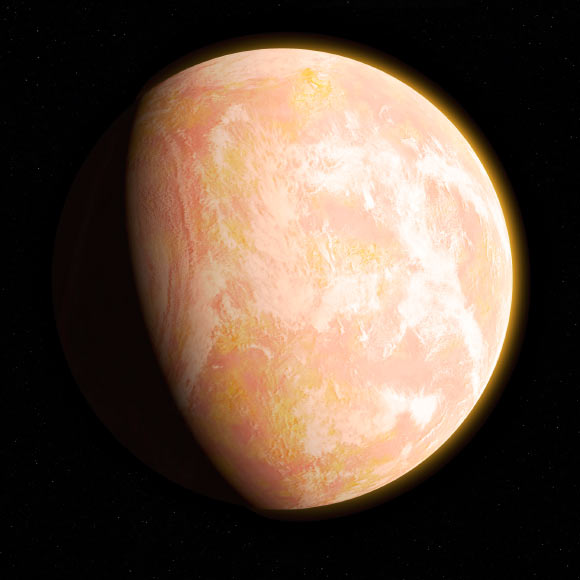In the Archean Eon, more than 2.3 billion years ago, Earth’s atmosphere spent about a million years filled with a methane-rich haze; and this haze drove a large amount of hydrogen out of the atmosphere, clearing the way for massive amounts of oxygen to fill the air, according to a University of St. Andrews-led research team.
The scientists reconstructed atmospheric chemistry during the time period immediately before the Great Oxidation Event (GOE), the singular event 2.3 billion years ago when oxygen concentrations in the Earth’s atmosphere increased by over 10,000 times.
“Reconstructing the evolution of atmospheric chemistry has long been the focus of geochemical research,” said lead author Dr. Gareth Izon, who contributed to the research while a postdoctoral researcher at the University of St. Andrews and is now a postdoctoral researcher at MIT.
“Our new data show that the chemical composition of the atmosphere was dynamic and, at least in the prelude to the GOE, hypersensitive to biological regulation.”
“The transformation of Earth’s air from a toxic mix to a more welcoming, oxygen-rich atmosphere happened in a geological instant. With this study, we finally have the first complete picture of how methane haze made this happen,” added co-author Prof. James Farquhar, from the University of Maryland.
The team’s results suggest that ancient bacteria produced massive amounts of methane that reacted to fill the air with a thick haze, resembling the modern-day atmosphere of Saturn’s moon Titan.
Previous studies by many of the same researchers had identified several such haze events early in Earth’s history. But the current study is the first to show how rapidly these events began and how long they lasted.
“Our new dataset constitutes the highest resolution record of Archean atmospheric chemistry ever produced, and paints a dramatic picture of Earth surface conditions before the oxygenation of our planet,” said co-author Dr. Aubrey Zerkle, from the University of St. Andrews.
“These data show unequivocally that biology fuelled a methane-rich hydrocarbon atmosphere, similar to that of Saturn’s moon Titan, for millions of years at a time. High methane levels meant that more hydrogen, the main gas preventing the build-up of oxygen, could escape into outer space, paving the way for global oxygenation.”
The methane haze persisted for about a million years. After enough hydrogen left the atmosphere, the right chemical conditions took over and the oxygen boom got underway, enabling the evolution of all multicellular life.
The key to the team’s analysis was the discovery of anomalous patterns of sulfur isotopes in the geochemical records from this time.
Sulfur isotopes are often used as a proxy to reconstruct ancient atmospheric conditions, but previous investigations into the time period in question had not revealed anything too unusual.
The team’s results were published this week in the Proceedings of the National Academy of Sciences.
_____
Gareth Izon et al. Biological regulation of atmospheric chemistry en route to planetary oxygenation. PNAS, published online March 13, 2017; doi: 10.1073/pnas.1618798114








